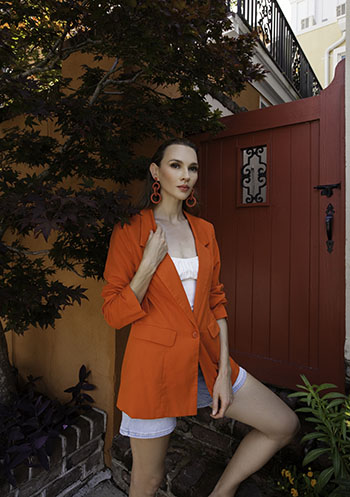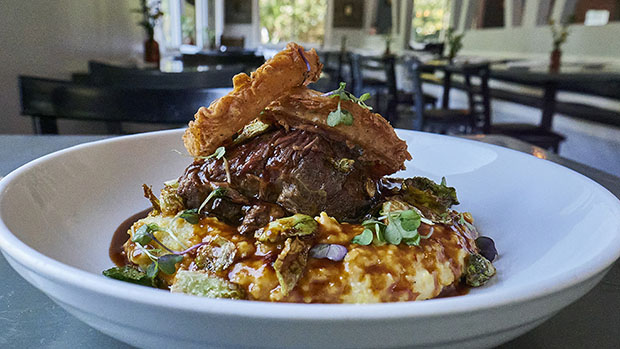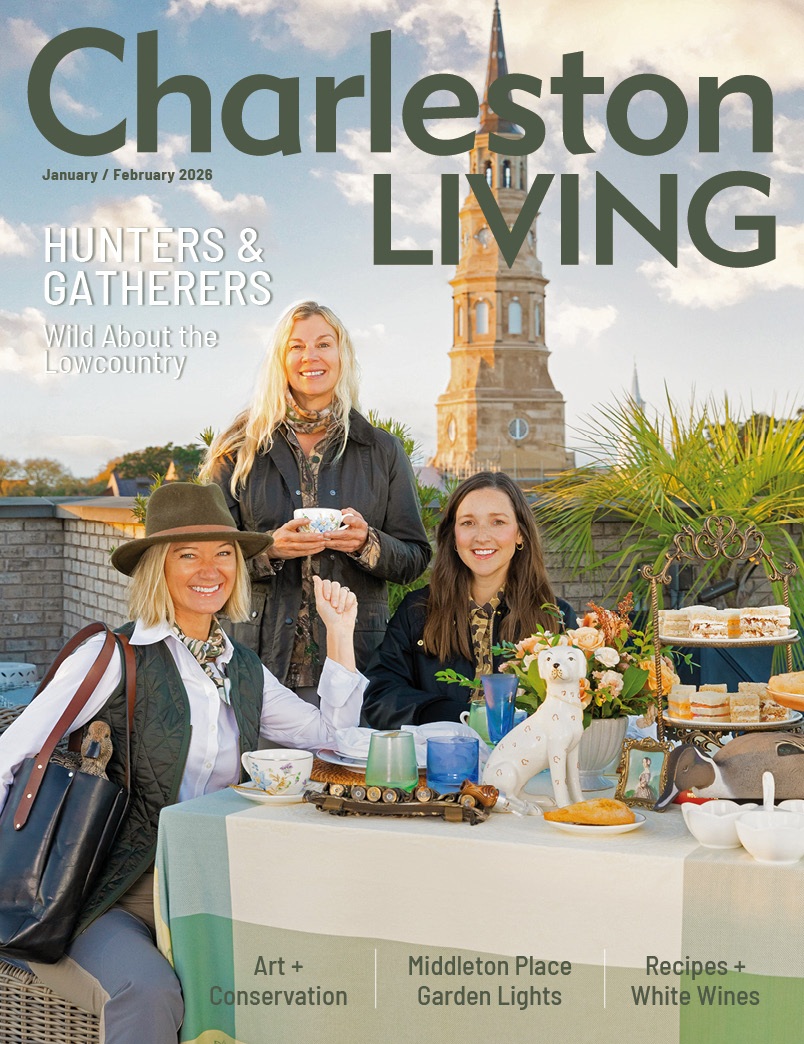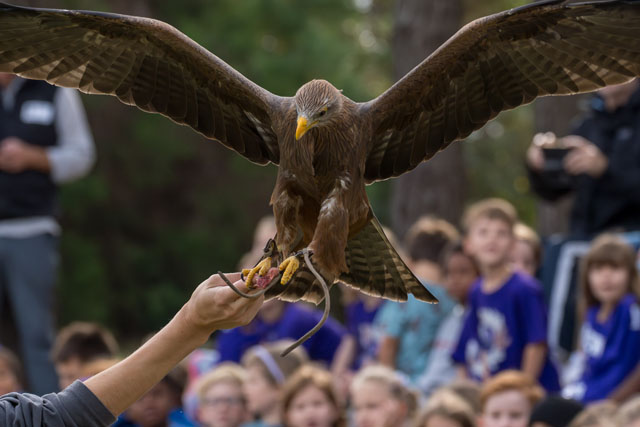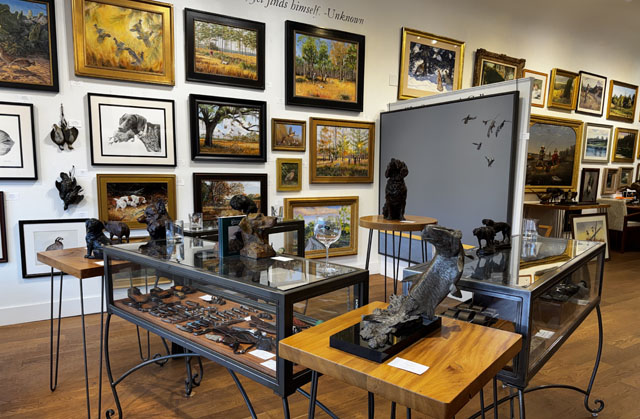Catch Some Air
04 Jul 2022
Hopping aboard for Charleston’s weekly summer sailboat races
Story and photos by Jenny Peterson
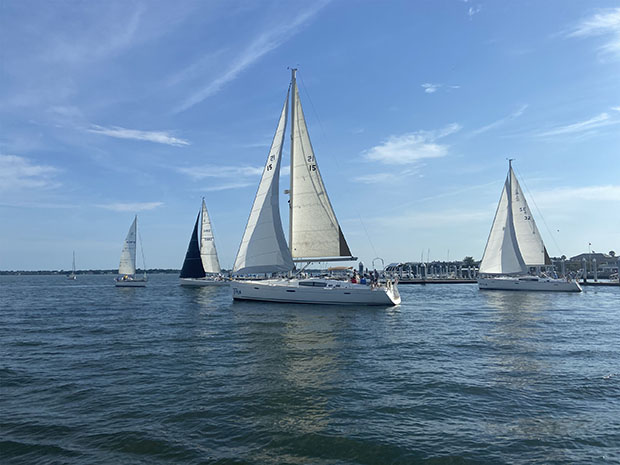
Every Wednesday during the summer, Charleston sailors gather for a different kind of happy hour: a friendly yet competitive race in the Charleston Harbor to see which boat can travel around a buoy and back in the shortest time possible.
“Across the nation, it’s referred to as ‘beer can racing,’ said Eddie Evans, a longtime sailor and Commodore of CORA, the Charleston Ocean Racing Association. “It’s supposed to be a little more laid back, but this turns out to be our most spirited competition.”
There are weekly races like this in coastal cities around the country, followed by food and libations at the sponsoring yacht club, where the winners of the race are announced and receive a small prize—for this CORA crew, it’s a commemorative glass.
“Beer does taste better out of it,” Evans laughs.
From the banks of the Charleston Battery, the races are a serene scene: more than two dozen sailboats gathered together at 6 p.m., triangle sails taught against the wind, gliding smoothly through the water.
But aboard, crews are buzzing once an airhorn goes off signaling the start of the race. They’re pulling in lines, swinging the boom—the large metal horizontal pole at the base of the sail—from side to side.
An official race committee sets up on the Carolina Yacht Club dock, keeping an eye on the race, communicating with sailors through a dedicated radio channel, calling the start times and officially documenting the winners.
“We try to keep the races to no more than an hour so everybody makes it back to the dock and the Charleston Yacht Club before the sun goes down,” Evans said.
Welcome Aboard
I hopped aboard the 41-foot boat named “Flat Iron” one Wednesday as a first-time participant. The crew was made up of five (excluding me, an amateur and observer.) All the members of the crew had met each other through the sailboat racing community.
“Charleston sailing and CORA is this big community, it’s very tight-knit,” said Sara Perry, a member of the crew.
At 4 p.m., everyone on Flat Iron gathered at the dock to prepare the sailboat for the race, removing lines from the dock, removing buoys (called fenders) off the side. There was an energy and excitement aboard.
“We got second place last week and now we’re all in,” Evans said.
The CORA summer series racing is only for monohull sailboats; no catamarans here. Sailboats are categorized into “fleets” based on their type (cruising sailboats versus racing sailboats) and the size and type of their sails.
The Flat Iron is a heavier cruising sailboat with traditional cloth sails; it was categorized as “D-Fleet.” Another race on Wednesdays includes sailboats with spinnaker sails—more lightweight, often colorful sails that make the boats cruise much faster.
Around 5 p.m., we began puttering out with the sailboat’s motor to the end of the Battery, unfurling the two sails, pulling lines tight, checking out all the equipment—and the fellow competition—as the boat meandered towards the tip of the Charleston peninsula.
“Boat people are always nice, they always wave,” Perry said.
Everyone seemed to know the regular sailing teams, including a sailboat manned by a stellar all-female crew and sailboat owned by the owners of Celadon furniture store with “Celadon” written on the side of the hull.
Catching the breeze
I learned that sailors use pieces of colorful yarn attached to the top of the sails as a guide to see where the wind is blowing. Ideally, you want the breeze to be flush going through both sets of yarn on either side simultaneously, Evans said—the equivalent of the wind blowing directly in the face of the boat.
During those ideal conditions, the wind “lifts” the boat, similar aerodynamics to an airplane wing, propelling it forward.
Evans describes the process of chasing those conditions by moving his hand in a swimming motion, steering the boat and manipulating the sail a little to the right, a little left, to get the wind to “lift” the boat.
“It would be great (to always get pushed by the wind); that makes for wonderful sailing. But life isn’t that way,” Evans said. “Sometimes you have to go up against the breeze. It’s always a push and pull,” Evans said.”
Sailors also need to pay attention to the tides, which are different every week at race time. Sometimes, the tides help the boats in the direction they want to go; other times, the tide is pushing the other way, making it harder to move forward against it.
As the sailboats waited to cross the starting line—an imaginary line between two buoys—they snaked around one another back and forth, practicing turns in a masterful practice of control and skill.
Captains have to stop the engine at four minutes before the race, all on the honor system. At that point, it’s all up to the sails.
“One minute to the start of D-fleet,” the radio buzzed on board as the boats angled towards the starting line.
“5-4-3-2-1” the radio crackled, followed by a series of five airhorn beeps.
That began the quietest race I’ve ever experienced; no wheels on a racetrack, no feet pounding pavements; the water cuts through the boat as quietly as scissors cutting through a piece of paper.
The only sounds are the intermittent metal clank of a sail, the wind catching the cloth with a whoosh, the wind whipping your hair.
Then began a series of mind-boggling instructions unfamiliar to non-sailors – “Trim the jib! Ease the main! Go hard on the breeze! Keep the heading! Fall down five degrees!”
As the boat veered to the left and right to best catch the wind, I was reassured that the boat could not, in fact, flip over as it leaned hard onto a wave. In fact, we were instructed to move to one side to help the boat lean more into the wind, legs dangling close to the water.
Evans has been sailing so long, it’s second nature to him; he can see the breeze coming before it reaches the sail.
“I can see the change in the pattern of the water up ahead, the coloration of the water. The darker the water, the bigger the breeze will be,” he said.
The most challenging part of the race was “tacking” around the buoy, moving the boom from one side of the boat to the other with the change in direction. Some boats took the turn tight around on the buoy; others used a strategy to go beyond the buoy several hundred feet and then cut back diagonally.
While Flat Iron didn’t win first or second place the week I joined, the races provide valuable practice and experience. Each week, the crew gets more nimble, more experienced and more memories are shared on the water.
“You learn so much more from racing that you don’t learn from just going out sailing,” Evans said. “You have to know ahead of time what you’re going to do. You have to anticipate where you’re going to turn and what the breeze might do. The breeze is constantly shifting—even by a small amount. It’s never steady; it could be up or down, more pressure, less pressure at any moment.”
It was masterful—almost magical—how the boat was able to propel forward just by taking advantage of the wind. And win or lose, the view never gets old—“not the smell, not the feel,” Evans said.
In addition to weekly summer series sailboat racingCORA, an approved organizing authority by US Sailing, organizes several racing events throughout the year. Evans said the mission is to expose as many people as possible to the sport.
“During race week, I had 14 people on board,” Evans said. “You go slower with that many people, but there were people who wanted to experience it and I try not to turn anybody down. The important part of this is getting out on the water, having a little fun and getting together.”
A “femme fatale” race is held with only female captains. A Military Salute Regatta, held every year on July 4 weekend, connects veterans and military members with racing teams who welcome them aboard.
Following every race, all participants are rewarded with a burger and beverages at the Charleston Yacht Club.
Perhaps it was because it was consumed following my first sailboat race, after an hour in the sun, or after all the adrenaline and excitement, but that burger was one of the most satisfying burgers I’ve ever had.
As for the sailboat race winners, the beer out of their commemorative glasses might have also tasted just a little bit sweeter.
To learn more about the Charleston Ocean Racing Association, visit www.charlestonoceanracing.com.

